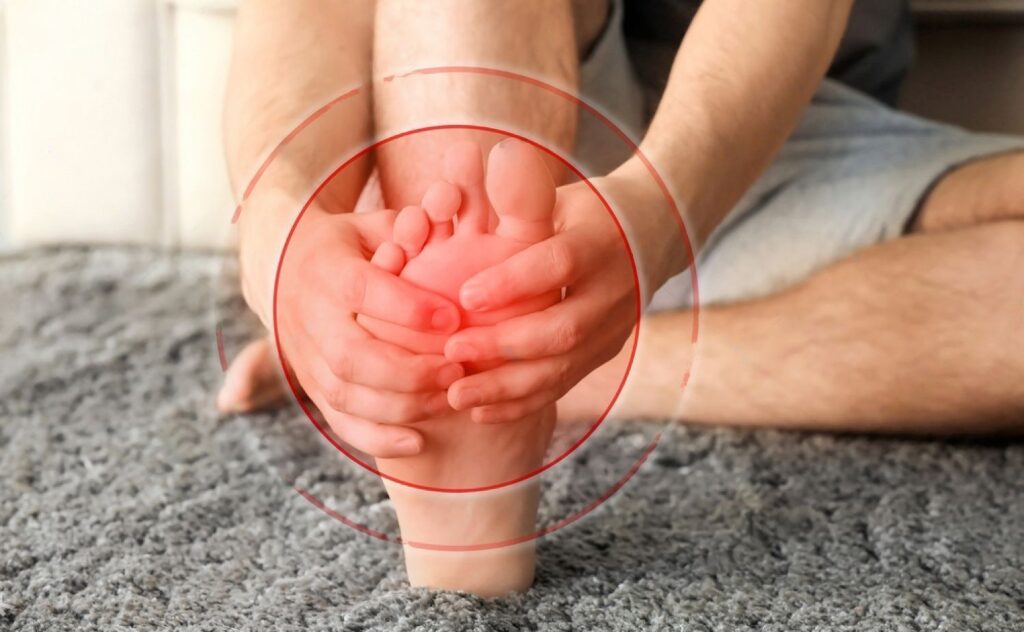Walking shouldn’t hurt. But for those dealing with fat pad atrophy, each step can feel like a painful reminder that something’s not right. This often-overlooked foot condition can significantly affect your mobility, comfort, and quality of life. Fortunately, modern solutions exist — and that’s where expert-guided Fat Pad Atrophy Treatment comes in.
In this post, we’ll break down what fat pad atrophy is, why it happens, how to recognize it, and the treatment options available here at the Foot and Ankle Center of Arizona.
What Is Fat Pad Atrophy?
Fat pad atrophy refers to the thinning or loss of the natural cushioning (fat pad) under your heel or the ball of your foot. This padding acts as a shock absorber, protecting bones, ligaments, and tendons from the impact of walking and standing. As it wears down, you may begin to feel like you’re “walking on bone,” especially on hard surfaces or when barefoot.
Common Causes of Fat Pad Atrophy
Fat pad thinning doesn’t just happen overnight. Here are some common causes:
- Aging: Natural tissue breakdown is a major contributor.
- Overuse: Long-distance walking, running, or standing for hours can speed up deterioration.
- Foot Structure Issues: High arches or abnormal gait can place excess pressure on certain areas.
- Health Conditions: Diabetes, rheumatoid arthritis, or previous foot injuries may play a role.
- Improper Footwear: Shoes without support can stress the foot and worsen the condition.
Symptoms to Watch For
Not sure if you’re experiencing fat pad atrophy? Some signs include:
- Pain when walking or standing, especially under the heel or ball of the foot
- Increased sensitivity when barefoot
- Feeling like there’s “no cushion” under your foot
- Visible thinning or hollowness in the sole
- A burning or aching sensation after long periods of standing
If any of this sounds familiar, seeking Fat Pad Atrophy Treatment early can prevent further complications and get you back on your feet — pain-free.
How Is Fat Pad Atrophy Diagnosed?
At the Foot and Ankle Center of Arizona, Dr. Kris A. DiNucci and our team use a combination of physical examination, patient history, and imaging (like ultrasound or X-rays) to accurately assess fat pad loss. We also consider lifestyle and footwear habits to understand your overall foot health.
Fat Pad Atrophy Treatment Options
Depending on the severity of the condition, we offer several effective Fat Pad Atrophy Treatment solutions:
1. Custom Orthotics
We create personalized orthotic inserts to relieve pressure on sensitive areas and restore proper foot alignment. These provide daily support and cushioning.
2. Shoe Recommendations
Supportive, cushioned shoes make a huge difference. We’ll guide you in choosing footwear that supports your arches and offers enough padding.
3. Dermal Fillers
A minimally invasive treatment that injects medical-grade fillers into the affected area, mimicking the lost fat cushion. Relief can last from 6 to 12 months.
4. Shockwave Therapy
This advanced therapy uses sound waves to stimulate tissue repair, reduce inflammation, and support the body’s healing process.
5. Activity Modifications
Sometimes, the best treatment is prevention. We help you adjust your physical activities to reduce repetitive stress on your feet.
What Happens if It’s Left Untreated?
Ignoring fat pad atrophy can lead to worsening foot pain, callus formation, joint inflammation, and even stress fractures. Early intervention is key to preventing permanent changes to your foot structure.
Why Choose Us for Fat Pad Atrophy Treatment?
Located in Scottsdale, AZ, the Foot and Ankle Center of Arizona is led by Dr. Kris A. DiNucci, a board-certified podiatric surgeon with over 25 years of experience. Our personalized care, modern technology, and dedication to patient outcomes make us a leading provider for Fat Pad Atrophy Treatment in Arizona.
We’ve helped hundreds of patients relieve chronic pain and return to an active lifestyle. Now it’s your turn.
FAQs About Fat Pad Atrophy Treatment
Q: How long do dermal filler results last for foot cushioning?
A: Typically 6–12 months, depending on activity level and the filler used.
Q: Is surgery needed for fat pad atrophy?
A: Most cases can be managed without surgery using conservative treatments like orthotics and fillers.
Q: Can I prevent fat pad atrophy?
A: While you can’t always prevent it, wearing supportive shoes and managing chronic conditions can help slow its progression.




